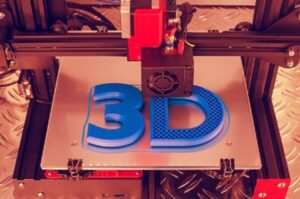Biometric Employee Time Tracking System
5 min readBiometric Employee Time Tracking System
When the global COVID-19 pandemic first broke out in early spring of 2020, it was the first time for many economies around the world to learn what it is like to switch from office work to working remotely on a massive scale. After a short break in summer there came the second wave, later accompanied by even more contagious mutation of the coronavirus which forced many countries into lockdown once again.
With so many people working from home, corporate bosses had to learn new ways to control their labor force remotely. But even if it wasn’t for the global pandemic, cases of absenteeism and tardiness have always been a big problem for many organizations. Thus, time and attendance software had to come and help sooner or later anyway.
What Enterprises May Need Biometric Employee Time Tracking For?
According to the data for 2019 of the US Bureau of Labor Statistics, the ratio of workers with absences to the total number of American full-time employment varied somewhere between 2 and 4 percent, depending on the type of occupation. What’s more interesting, lost work time rates (defined as the ratio of hours being absent to total full-time work hours) split for most occupations almost equally between two categories of reasons for being absent: illness or injuries and “other”.
What could those “other” reasons for being off work mean? Apparently, any company’s manager would like to know the answer. With biometric time and attendance software available on the market, it is much easier to track employee working hours even without their physical presence on company’s premises.
Biometric time and attendance software is a cutting-edge technology which allows employees to clock in and out electronically using their biometric modalities (fingerprints, face, iris, voice, handwriting), enabling their superiors to track their attendance automatically. Despite being technologically advanced, many of those applications are affordable even for small companies.
There are many instances where such tracking may be of crucial importance:
- Hourly wage schemes. In this case it really matters when exactly an employee commenced his/her work, when it ended, and how long the dinner break lasted.
- Managing other employer’s needs. Tracking an employee’s geographical location is a good example, especially if that employee is on quarantine. Managing paid time off is also much easier with special software applications.
- Specific industries. According to the same table with statistical data for the US labor market, there are several industries with especially high degrees of absenteeism. Healthcare support, for example, demonstrates significant lost work time rates for reasons other than illness or injury.
There is also another part of the story. Medical staff is not the only one whose attendance needs tracking. There are also patients in hospitals who may try to leave when they are not supposed to. In times of COVID-19, this possibility sounds especially dangerous to public health.
- COVID-19 considerations made regular temperate screening very important. Some of the biometric employee tracking software made it possible to measure temperature upon facial recognition before an employee actually enters the office building and puts other colleagues’ heath to danger, if infected.
- Thinking more broadly – student absenteeism is another serious problem. According to the Economic Policy Institute, most of the American states decided to follow ESSA (the Every Student Succeeds Act), which in 2015 required nontraditional measures, including those associated with absenteeism. Biometric time and attendance software may be used not only with office clerks, but also with students to find out how much school time is missed by them, and for what reasons.
Pros and Cons of the Biometric Employee Time Tracking System
Pros:
- Some of the readers may have recognized the paper time cards which have been filled in manually by workers for many decades. Biometric employee time tracking systems makes it all much easier, accurate, and safer nowadays with remote collection of biometric modalities.
- Biometric employee tracking software is also capable of making all necessary calculations on its own, decreasing chances of error and leaving spare time for more value-adding activity.
- There comes increased productivity as a result of employees’ awareness of the fact they are being paid for their actual work hours which are now being tracked more accurately.
- Then follows cost saving as a result of many positive consequences, such as absence of overpayments, more efficient time distribution, and automation on routine tasks like tax accounting, paid time off and work schedule management.
Cons:
- Probably one of the greatest dangers of all those innovations is dire consequences of compromising personal data. Organizations employing biometric employee time tracking systems should make sure their data protection strategies are fully aligned with the global data protection regulation (GDPR).
According to Gartner (the information which is referred to in the SHRM article), the share of employees who didn’t mind collecting their biometric modalities at work with advanced technological methods increased from 35 to 50% from 2016 through 2019. However, they didn’t mind that only upon full awareness of what their employers were going to do with the data.
- Another potential issue is costs which may still be a great part of small companies’ budgets, especially in crisis times like we’re seeing today.
Why NCheck May Be the Optimal Choice
It is quite easy to get lost in such a great variety of different products for employee time tracking, but time and attendance software from NCheck possesses a number of features which distinguish the company’s products from that of competitors.
- Cloud-based applications allow biometric checks of employee status from anywhere and anytime, no matter what operating system is used, may it be Android, iOS, or Windows;
- The bio attendance system from NCheck may be used remotely as well as locally on company’s premises;
- It is well suited for unusual situations like the COVID-19 pandemic, capable of accurate facial recognition even for moving objects as it will definitely be the case with employees entering and exiting the office building;
- As a big plus, a 30-day free trial is provided to see if the product fits your desires.
Why Biometric Employee Time Tracking Systems Are Part of the New Reality?
Let’s face it: after the coronavirus outbreak, the world will never again be what it used to be. Even with global vaccination and immunization, it is impossible to exclude outbreaks of new viruses in the future, let alone the ambiguity around COVID-19 mutation perspectives. No matter what, we’ll have to be more careful with personal contacts now on, which means remote employee tracking systems are here for long, if not forever.
With so many advantages they offer, there are no reasons to get rid of them even in the absence of remote working conditions as a consequence of lockdown. With that in mind, it is highly advised to automate time and attendance tracking with best offers available on this market segment.






